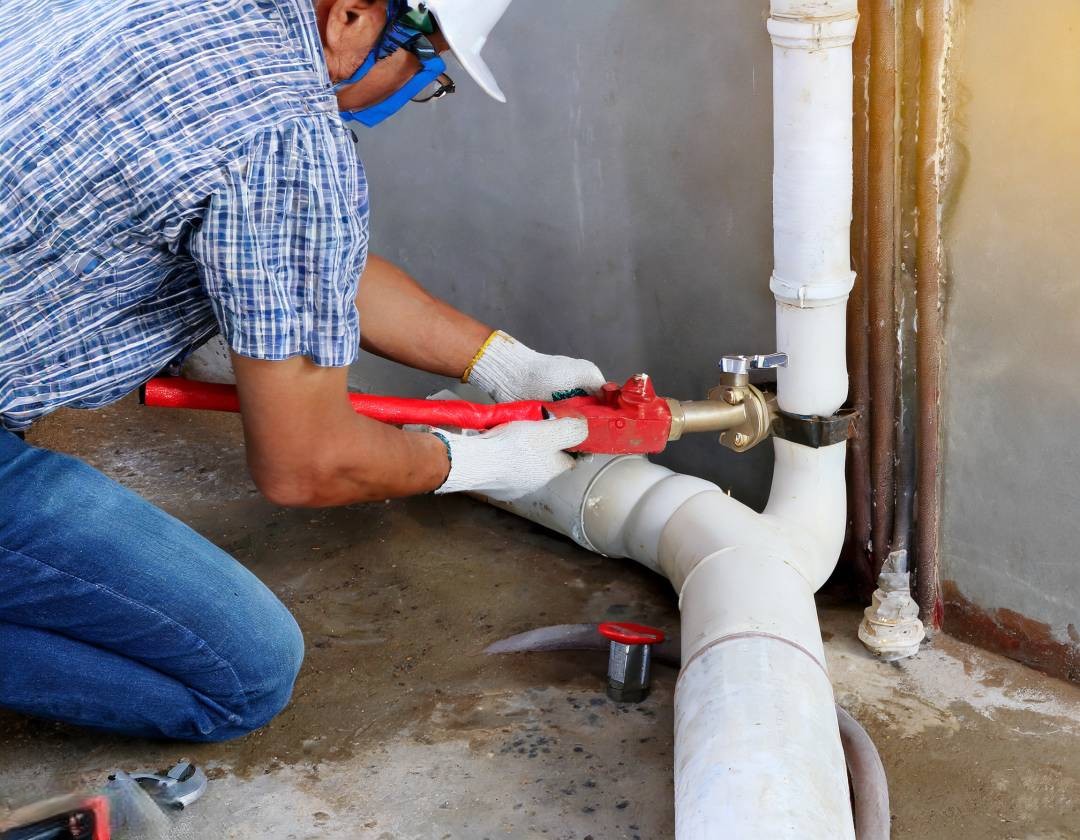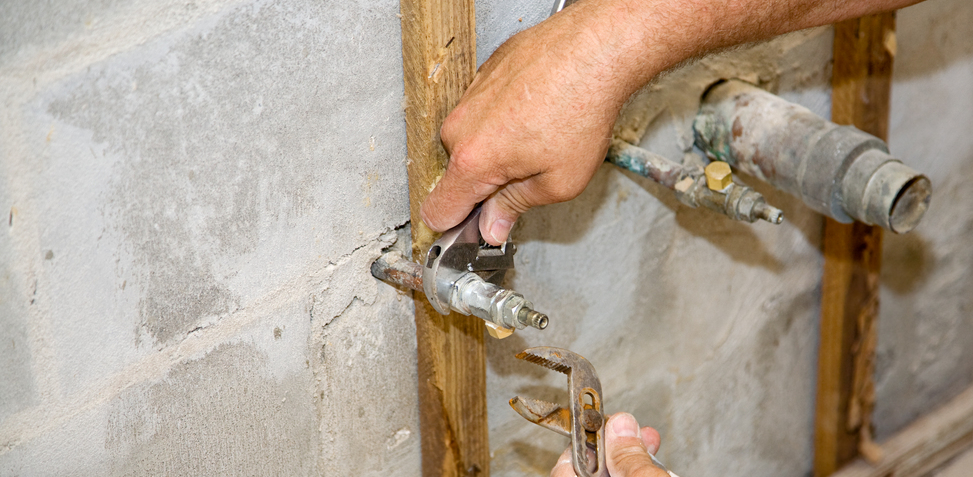Ways to Successfully Manage Plumbing Issues in Older Homes
Ways to Successfully Manage Plumbing Issues in Older Homes
Blog Article
This great article further down about Common Plumbing Challenges In Old Buildings is absolutely entertaining. Read it for your own benefit and see what you think about it.

Older homes commonly come with beauty, character, and history, however they can also bring a host of plumbing problems. Whether you're handling maturing pipes, low tide pressure, or leakages, knowing how to attend to these usual troubles is important to preserving a secure and functional home. In this overview, we'll explore the typical plumbing obstacles encountered by older homes and provide useful options to maintain your plumbing in top form.
Comprehending Usual Pipes Issues
Aging Pipes
Among the most typical issues in older homes is maturing pipelines. Depending on the era in which your home was developed, the pipelines may be made from products that have degraded with time, such as galvanized steel, cast iron, and even lead. These products can wear away, end up being weak, or create leaks, leading to water damage and prospective health hazards.
Low Water Pressure
If you're experiencing low water pressure, it could be because of mineral deposits, rust inside the pipes, or old fixtures that are no longer working effectively. This can be a major hassle, particularly in locations like showers and sinks.
Dripping Pipes
Leaks are an additional frequent concern in older homes, frequently triggered by rusty or damaged pipelines. Also small leaks can cause substantial water damages, mold and mildew growth, and enhanced water expenses if not dealt with immediately.
Obsolete Components
Obsolete pipes components such as taps, toilets, and showerheads not only look old but may likewise be less efficient, prone to leakages, or inappropriate with contemporary plumbing requirements.
Pipe Rust
Rust is a typical issue in older pipelines, especially those made from galvanized steel or cast iron. Corroded pipes can restrict water flow, cause discoloration, and at some point bring about leakages or pipeline bursts.
Assessing the Problem of Your Pipes
Evaluating Noticeable Pipes
Begin by examining any type of noticeable pipes in your house, such as those in basements, crawl spaces, or under sinks. Search for signs of corrosion, leaks, or rust, which can show underlying concerns.
Looking for Leaks
Look for leakages by evaluating locations around faucets, toilets, and under sinks. You can additionally check your water meter before and after a period of no water use to detect surprise leakages.
Water High Quality Testing
Older pipes can affect the top quality of your water. Conduct a water top quality examination to look for impurities such as lead, rust, or other contaminations that might be introduced by maturing pipes.
Solutions for Common Pipes Problems
Replacing Aging Pipelines
If your home has old, degrading pipes, take into consideration changing them with modern materials like copper or PEX. This can be a substantial financial investment, however it will protect against future problems and boost the safety and integrity of your plumbing system.
Dealing With Low Water Stress
To repair low tide stress, start by cleansing or replacing old components and removing mineral build-up in the pipes. If the issue continues, it might be required to change sections of rusty pipelines.
Repairing and Replacing Dripping Pipelines
For little leakages, you can use pipeline clamps or epoxy putty as a temporary solution. Nevertheless, it's ideal to replace leaking pipelines entirely to prevent additional damages.
Upgrading Fixtures
Updating old fixtures to contemporary, water-efficient versions can enhance your home's pipes performance and decrease water intake. Look for fixtures with the WaterSense tag for the best effectiveness.
Dealing with Pipe Deterioration
If your pipes are rusted, changing them with corrosion-resistant materials like copper, PVC, or PEX is the most effective solution. Routine assessments and water quality maintenance can assist protect against even more deterioration.
When to Call a Specialist
While some plumbing issues can be managed with do it yourself remedies, there are times when it's finest to employ a professional. If you're handling major leaks, substantial deterioration, or are uncertain regarding the problem of your pipelines, a qualified plumber can offer skilled evaluation and repair.
Preventive Upkeep Tips
Normal Inspections
Consistently inspect your plumbing system for signs of deterioration. Capturing issues early can protect against costly repair work down the line.
Water Pressure Law
Guarantee your water pressure is within the advised array to stay clear of stressing your pipes and fixtures. A plumbing can install a pressure regulatory authority if required.
Water Quality Maintenance
Mount water filters or conditioners if your water top quality is poor. This can secure your pipelines and components from damages brought on by hard water or contaminants.
Aggressive Pipe Substitute
If your home has very old pipelines, consider positive substitute prior to major problems arise. This can conserve you from emergency situation repairs and water damages.
Verdict
Dealing with plumbing problems in older homes requires a combination of watchfulness, precautionary maintenance, and prompt upgrades. By recognizing the usual obstacles and recognizing when to look for professional aid, you can guarantee your pipes system continues to be practical and trustworthy for several years ahead.
Common Plumbing Problems in Older Homes
Older homes have a ton of character from the antique brass faucets, clawfoot tubs, and colorful tile to the Dutch doors, transom windows, and archways, there s a lot to love. Unfortunately, that character often includes old plumbing that s past its prime and isn t fit to support modern appliances.
If you own an older home and are suspicious about strange noises (ghosts?), smells, leaks, or frequent clogs in your plumbing, it's possible that your home s old age is to blame.
Learn more about the most common old house plumbing problems, and what can be done to fix them!
What Are the Most Common Plumbing Problems in Old Houses?
Old, corroded piping. Most older pipes are made of material that corrodes and rusts more easily. Even if over the years some of that piping was replaced with better material, the rest may be damaged or repaired with lower-quality material. Though expensive, it may be the best option to re-pipe your plumbing especially if there s rust or lead in your water. Slow drains. This could be the result of many issues, but most likely because of pipe bellies. These are sags in your drainpipes that happen as your home settles and shifts downward over time, putting pressure on your pipes and creating negative slopes. This can restrict water from flowing correctly through them and result in slow drains. Frequent clogging. As you might expect, pipe bellies can also lead to frequent clogging. Another reason for clogging could be due to buildup over time, or blockages from sediment and root growth. Scheduling a drain inspection and drain unclogging service can eliminate this issue. Damaged or failing sewer lines. Old homes are more likely to have foundational shifts and tree root overgrowth. This can put a lot of pressure on and in your sewer lines, leading to damage. Another common reason for failed sewer lines is because of modern appliance upgrades. Newer appliances put more strain on sewer lines, and if your old pipes aren t equipped to handle this, it can result in damage. If you have any wastewater backup, slow drains, or soft spots in your yard, you may need sewer line replacement. Worn or outdated fixtures. Plumbing fixtures old or new aren t built to last forever. Even if your fixtures seem like they re working well, it s best to check the wear on any internal parts. Minor wear and tear over time can lead to more costly leaks and plumbing issues. Our experts can perform a plumbing inspection for any part of your home s plumbing. Improper installations or repairs. Whether your plumbing was installed a hundred years ago, installed incorrectly, repaired incorrectly, or repaired with outdated materials, this can affect the long-term stability of your plumbing. In older homes especially, having your plumbing inspected is vital to preventing damage. What Are Old Plumbing Pipes Made Of?
Galvanized steel. Most often used between the 1930s and the 1980s, this piping material was discovered later in the 1990s to be prone to rust and corrosion, releasing lead into the water, which is dangerous to consume. Copper. Most homes built around the 1960s are likely to have copper piping. Unlike galvanized steel, copper is one of the most durable materials for plumbing pipes. The issue with this material is the risk of lead, which could be present in the piping itself or the solder applied to the joints and fittings. PVC. This material is still used today and was often used in older homes where piping was replaced because it was easy and inexpensive to install. PVC is also very durable, lead-free, resistant to rust and corrosion, and handles high water pressure well. The downside is that hot water can make it warp. How to Fix Plumbing Problems in Old Homes
Have your plumbing inspected. Before you begin or schedule any type of repair, schedule a plumbing inspection. An expert will be able to properly identify all the issues in your plumbing and the best solution to avoid further damage. Get your plumbing repaired or replaced as needed. Depending on the issues found with your plumbing, you may need minor repairs or larger replacements. Make sure these issues are addressed before you tackle any smaller issues. Remove any clogs or buildup. It s likely your old pipes are clogged with debris, mineral buildup, hair, tree roots, and more. Having your drainpipes cleaned will improve overall drainage and help prevent future leaks. Replace old fixtures. Before replacing any fixtures, check with your local plumber first. Not only can new fixtures strain your old plumbing pipes, but installing them incorrectly can lead to costly damage.

Do you really like reading up on Common Plumbing Challenges In Old Buildings? Post a review down the page. We would be glad to know your reactions about this write-up. We hope that you visit us again soon. Don't hesitate to take the time to share this post if you enjoyed it. We take joy in your readership.
Call Today Report this page